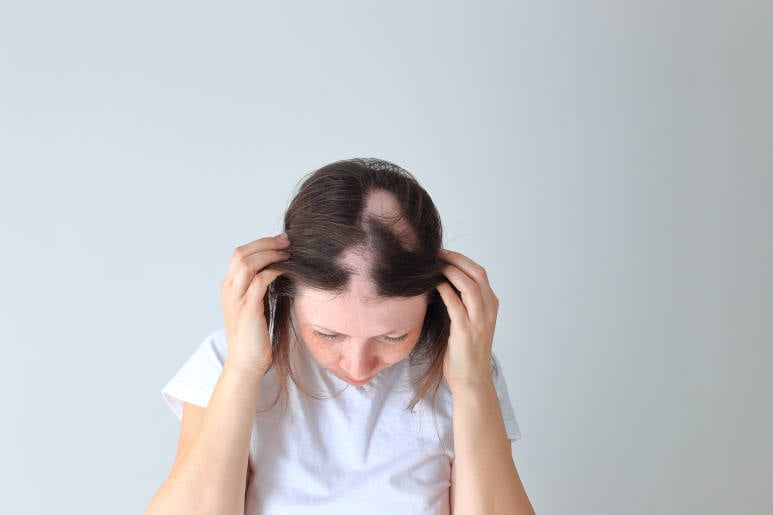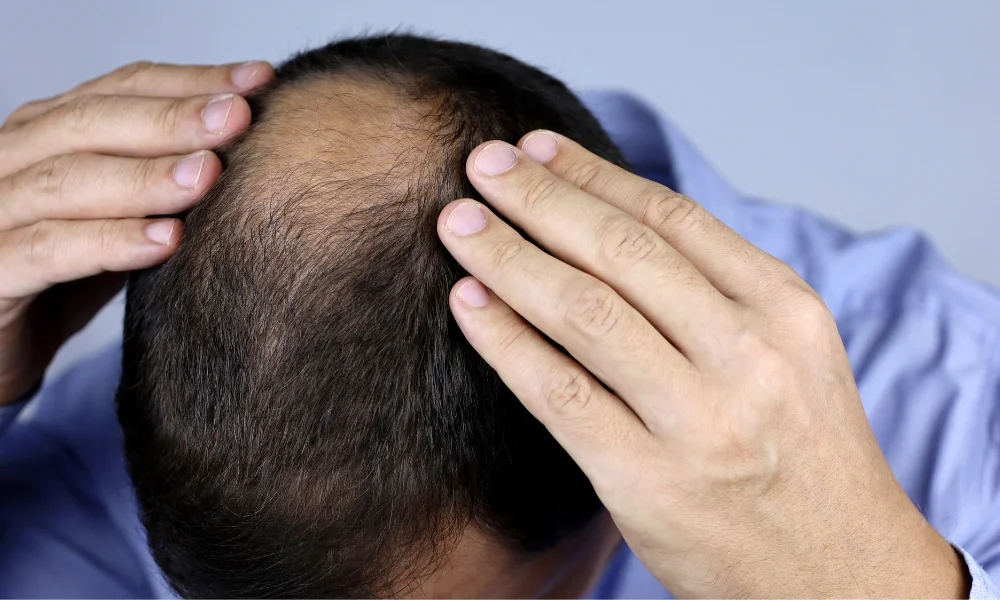
Alopecia areata is an autoimmune disorder in which the body’s immune system mistakenly attacks healthy hair follicles. This causes sudden, round patches of hair loss on the scalp or other areas of the body. Unlike scarring alopecia, the skin in the affected areas usually remains smooth, and in many cases, the hair can regrow naturally over time.
For some people, the condition is temporary and resolves within months. For others, it may persist or progress into more severe forms, such as total scalp hair loss (alopecia totalis) or complete body hair loss (alopecia universalis).
The exact cause of alopecia areata is not fully understood, but several factors contribute to its development:
Genetics– People with a family history of autoimmune diseases, including alopecia areata, are more likely to experience it themselves.
Immune system dysfunction– The immune system targets hair follicles as if they were harmful, interrupting normal hair growth.
Environmental triggers– Stress, illness, or certain infections may trigger or worsen symptoms.
Associated conditions– Alopecia areata is sometimes linked with other autoimmune disorders, such as thyroid disease, vitiligo, or type 1 diabetes.
Sudden, round or oval patches of hair loss, often on the scalp or beard area.
Smooth skin where the hair has fallen out, without signs of scarring.
“Exclamation mark hairs” at the edges of bald patches – short hairs that taper near the scalp.
In some cases, changes in the nails such as pitting, ridges, or brittleness.
Yes, many people experience spontaneous regrowth within a few months to a year. The likelihood of recovery is higher when only small patches are affected. However, the condition can also return unexpectedly, even after hair has grown back.
Although there is no permanent cure, a variety of treatments can help stimulate hair regrowth or control the immune response:
Corticosteroid injections– Directly injected into bald patches to reduce immune activity and encourage hair regrowth.
Topical treatments– Minoxidil and corticosteroid creams or foams can be applied to affected areas.
Topical immunotherapy– Chemicals such as diphenylcyclopropenone (DPCP) are used to create an allergic reaction that may stimulate new hair growth.
Oral medications– In recent years, JAK inhibitors (such as baricitinib, ritlecitinib, and deuruxolitinib) have shown strong results in clinical trials and have been approved in some countries for severe cases.
Lifestyle adjustments– Managing stress, improving diet, and addressing underlying autoimmune conditions may support overall treatment outcomes.
Hair transplant surgery is generally not recommended for active alopecia areata. Since the immune system continues to attack hair follicles, transplanted hair may also fall out. However, in cases where the disease has been inactive for a long period and bald areas remain stable, transplantation might be considered under specialist guidance.

Manage stress– Relaxation techniques, yoga, meditation, or exercise can reduce stress-related flare-ups.
Eat a balanced diet– Ensure sufficient protein, iron, vitamin D, and other nutrients that support healthy hair growth.
Avoid harsh treatments– Limit chemical styling, heat, or other practices that may stress the scalp.
Seek support– Support groups and counseling can help individuals cope with the emotional and social effects of hair loss.
Alopecia areata can be unpredictable, but for many, it is not permanent. With a range of modern treatments now available, from topical solutions to advanced oral medications, patients have more options than ever to manage the condition. Early consultation with a dermatologist is the best way to explore which treatment path is most suitable.
Can children outgrow alopecia areata?
Yes, children with mild cases often see natural regrowth as they age, although recurrence is possible.
Does stress really affect alopecia areata?
Stress does not directly cause the condition but can trigger or worsen flare-ups.
Will the hair that regrows look the same?
Sometimes regrown hair is initially thinner or white, but it usually regains normal color and texture over time.
Is alopecia areata contagious?
No. It is an autoimmune condition and cannot spread from person to person.